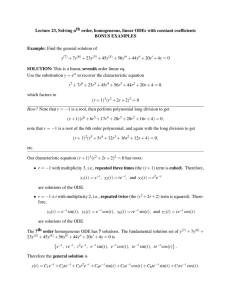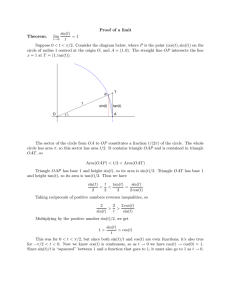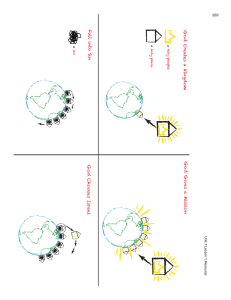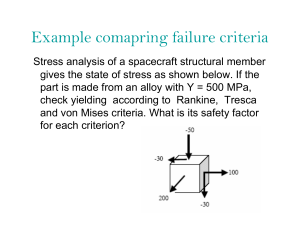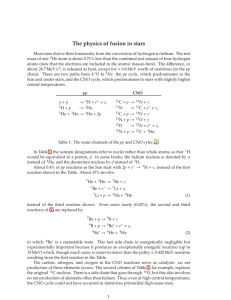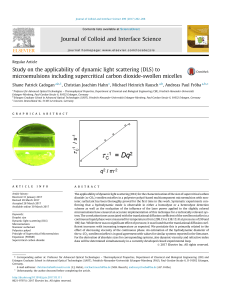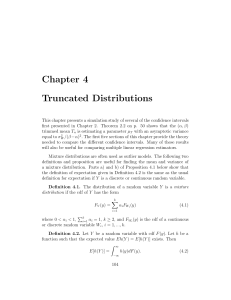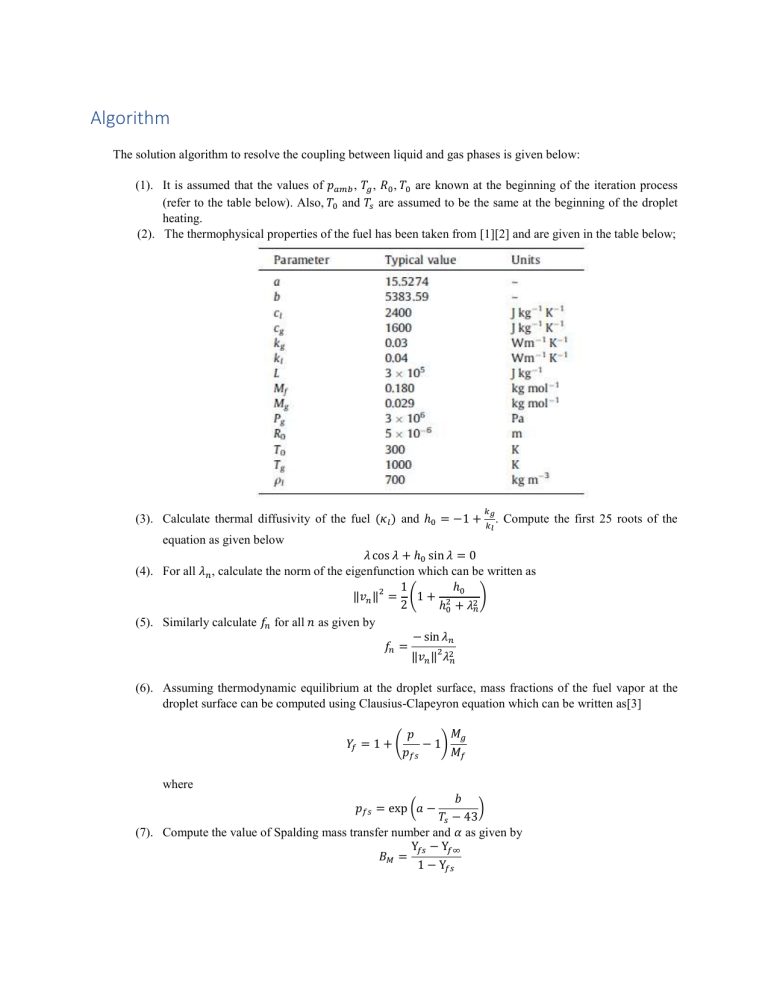
Algorithm The solution algorithm to resolve the coupling between liquid and gas phases is given below: (1). It is assumed that the values of 𝑝𝑎𝑚𝑏 , 𝑇𝑔 , 𝑅0 , 𝑇0 are known at the beginning of the iteration process (refer to the table below). Also, 𝑇0 and 𝑇𝑠 are assumed to be the same at the beginning of the droplet heating. (2). The thermophysical properties of the fuel has been taken from [1][2] and are given in the table below; (3). Calculate thermal diffusivity of the fuel (𝜅𝑙 ) and ℎ0 = −1 + 𝑘𝑔 𝑘𝑙 . Compute the first 25 roots of the equation as given below 𝜆 cos 𝜆 + ℎ0 sin 𝜆 = 0 (4). For all 𝜆𝑛 , calculate the norm of the eigenfunction which can be written as 1 ℎ0 ‖𝑣𝑛 ‖2 = (1 + 2 ) 2 ℎ0 + 𝜆2𝑛 (5). Similarly calculate 𝑓𝑛 for all 𝑛 as given by − sin 𝜆𝑛 𝑓𝑛 = ‖𝑣𝑛 ‖2 𝜆2𝑛 (6). Assuming thermodynamic equilibrium at the droplet surface, mass fractions of the fuel vapor at the droplet surface can be computed using Clausius-Clapeyron equation which can be written as[3] 𝑌𝑓 = 1 + ( 𝑀𝑔 𝑝 − 1) 𝑝𝑓𝑠 𝑀𝑓 where 𝑏 ) 𝑇𝑠 − 43 (7). Compute the value of Spalding mass transfer number and 𝛼 as given by Y𝑓𝑠 − Y𝑓∞ 𝐵𝑀 = 1 − Y𝑓𝑠 𝑝𝑓𝑠 = exp (𝑎 − 𝛼=− 𝑘𝑔 . log(1 + 𝐵𝑀 ) 𝑐𝑔 . 𝜌𝑙 . 𝑅02 Y𝑓∞ is assumed to be zero. (8). Compute the values of 𝑞𝑛 for all 𝑛 as given by 𝑞𝑛 = where 𝜉 = 𝑅 𝑅𝑑0 1 1 ‖𝑣𝑛 ‖ 2 ∫ exp ( 0 3 𝑅02 . 𝛼. 𝜉 2 ) . 𝑅02 . 𝑇(𝑅0 𝜉). sin(𝜆𝑛 𝜉) 𝑑𝜉 4𝜅𝑙 and 𝑇(𝑅0 𝜉) is the temperature distribution inside the droplet from the previous iteration, this is assumed to be uniform at the beginning of the iterative process and will be equal to 𝑇0 . (9). Calculate 𝜃𝑛 (𝑡) after the time step 𝑑𝑡 for all n as given by 𝑡 𝜅𝑙 . 𝜆2𝑛 . 𝑡 𝜇0 (𝜏) 𝜅𝑙 . 𝜆2𝑛 1 1 𝜃𝑛 (𝑡) = 𝑞𝑛 exp (− ) + 𝑓𝑛 . 𝜇0 (𝑡) − 𝑓𝑛 . 𝜅𝑙 . 𝜆2𝑛 ∫ 2 exp ( ( − )) 𝑑𝜏 , 𝑅0 . 𝑅𝑑 (𝑡) 𝛼. 𝑅0 𝑅𝑑 (𝑡) 𝑅𝑑 (𝜏) 0 𝑅𝑑 (𝜏) where 3 𝑘𝑔 . 𝑅𝑑2 (𝜏) 𝛼. 𝑅0 . 𝑅𝑑 (𝑡) 𝐿. log(1 + 𝐵𝑚 ) 𝜇0 (𝑡) = . exp ( ) (𝑇𝑔 − ); 𝑘𝑙 4𝜅𝑙 𝑐𝑔 𝑅𝑑 (𝑡) = 𝑅0 (1 + 𝛼. 𝑡) (10). The temperature distribution inside the droplet can thus be computed as an explicit function of R, and can be written as ∞ 1 𝛼. 𝑅0 . 𝑅2 𝑅 𝜇0 (𝑑𝑡) 𝑅 𝑇(𝑅) = exp (− ) ∑ (𝜃𝑛 (𝑑𝑡) sin (𝜆𝑛 )+ ) 4𝜅𝑙 . 𝑅𝑑 (𝑑𝑡) 𝑅𝑑 (𝑑𝑡) 1 + ℎ0 𝑅𝑑 (𝑑𝑡) 𝑅√𝑅𝑑 (𝑑𝑡) 𝑛=1 (11). Compute the new values for 𝑇𝑠 and 𝑅0 , where 𝑇𝑠 = 𝑇(𝑅𝑑 (𝑑𝑡)) 𝑅0 = 𝑅𝑑 (𝑑𝑡) (12). Return to step 6 if 𝑅0 > 𝜀𝐵 , where 𝜀𝐵 is the desired accuracy. Results and Plots References [1] S. S. Sazhin, P. A. Krutitskii, I. G. Gusev, and M. R. Heikal, “Transient heating of an evaporating droplet,” Int. J. Heat Mass Transf., vol. 53, no. 13–14, pp. 2826–2836, Jun. 2010. [2] S. L. Mitchell, M. Vynnycky, I. G. Gusev, and S. S. Sazhin, “An accurate numerical solution for the transient heating of an evaporating spherical droplet,” Appl. Math. Comput., vol. 217, no. 22, pp. 9219–9233, 2011. [3] W. A. Sirignano, Fluid dynamics and transport of droplets and sprays, second edition, vol. 9780521884. 2010.

